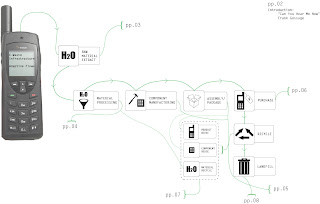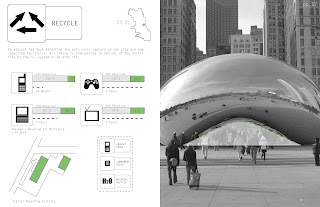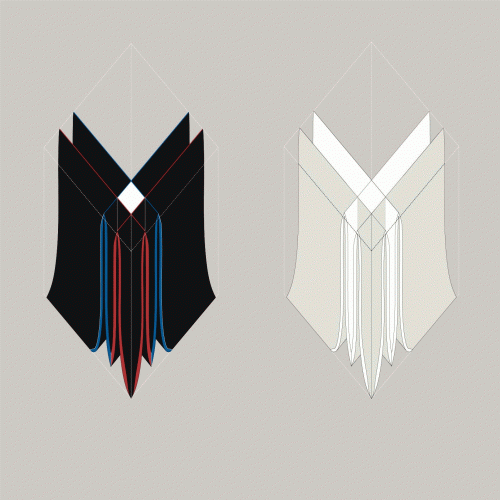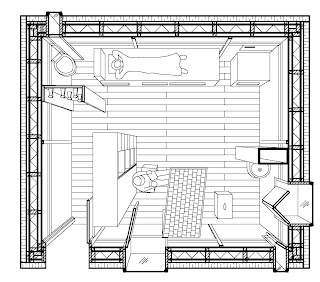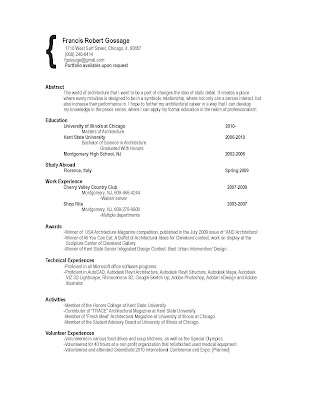Tuesday, December 28, 2010
Saturday, December 11, 2010
Friday, December 10, 2010
Thursday, December 9, 2010
Thursday, December 2, 2010
Thursday, November 18, 2010
Tuesday, November 9, 2010
Wednesday, October 27, 2010
Tuesday, October 26, 2010
Thursday, October 21, 2010
R.E. Somol
Figured I'd post some of my theory research so far though the semester and anyone interested in the state of architecture today should read these theorists [Somol, Kipnis] work
Eisenman V. Gossage
The concept of this semester long studio is control, more specifically control of form and formal decisions. The first iteration of work is a counterfeit of Peter Eisenman's House VI diagram set that he produced after he had actually built the house, to give an indexical history to the project. Which in retrospect were the only interesting part of the project because the final architecture didn't work at all and looked like hell to live in [there was a staircase upside down in the house...] Producing this set let me know way more about Eisenman than I cared to know, interesting how a box can turn into a 'house' in 14 steps though.
Anywayyyy the next part of the project forgery was to explore how the Eisenman would have done his project if he had computer aided design, maya, and more specifically the curve. So the whole process started over again reinterpreting all formal moves through the lens of the curve. The moves although different hold together through their nature of exponential levels of complexity through out the set as well as their formal composition [e.g. stairs, mullions, gridding]
Finally designing architecture now, thanks for House VI, Eisenman.
Wednesday, October 20, 2010
Thursday, September 16, 2010
Thursday, August 26, 2010
Tuesday, August 3, 2010
"Stehbars im Sǘden"
Siegfried Kracauer's essay on stand-up bars in the south of Italy took the motif of urban bar to the next level, describing them as a type of urban fragmentation and how they are simply an extension of the side walks. Unfortunately this type of fragmentation cannot occur in the United States because the heterogeneous mixing of people doesn't work that well...
Kracauer's observation of this fragmentation that led to a mixing of people was broken down into three distinct areas that he thought could define a space where optimal fragmentation would occur:
1. Architectural
Sale of architectural styles, materials, periods, transition spaces from street.
2. Representational
Mirrors: reality has become an issue of interpretation.
3. Social-Semiotic
Human: The objects in the room receive meaning only through use or contemplation.
Disconnected yet multifaceted.
Thursday, March 4, 2010
Working Drawings 3.2
Some sections that I have been working on for my 4th year design [systems] studio. These drawings are trying to exemplify the the overall integrated green theme of the design. The wall is a system compromising of a triple layer design of super-insulated glass layered on top of a mesh green wall that is formed to utilize the Bernoulli effect and circulate [promote flow] air through out the building. Thus naturally ventilating as well as being aesthetically pleasing.
Split-Second
 Via- http://somethinkfun.blogspot.com/
Via- http://somethinkfun.blogspot.com/Interesting how a frame in time can be diagrammed into the millions of experiences leading up to that exact moment and what happens after. Specifically in terms of the life span of a building, even though I only observed a minute portion of the life span of a building [demolition], there are limitless frames in which can be documented. 

OE midterm
Subscribe to:
Posts (Atom)

